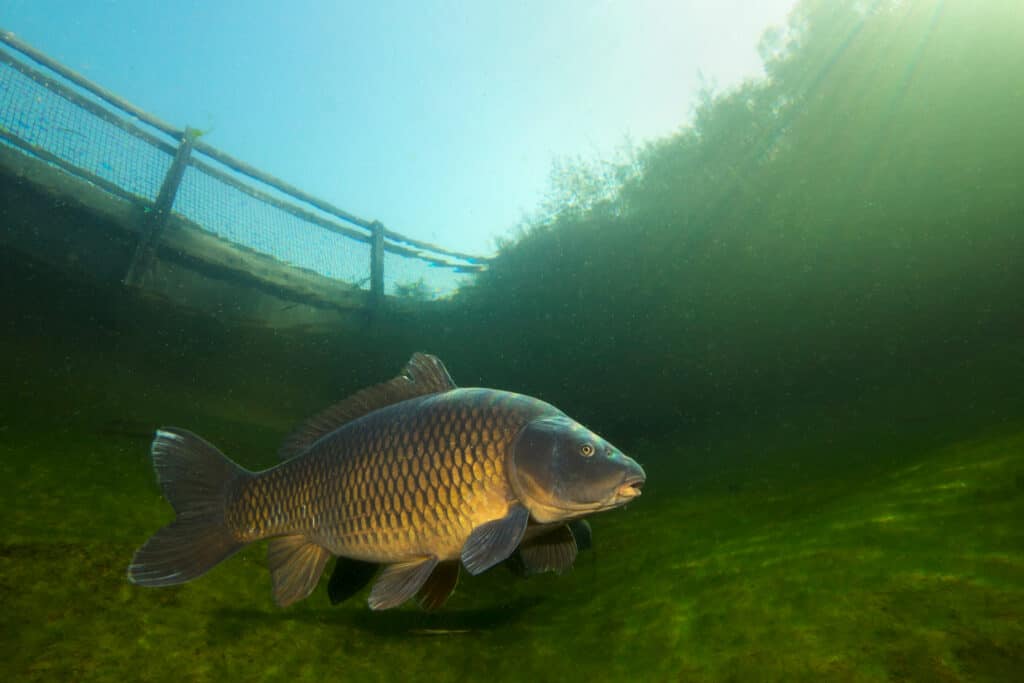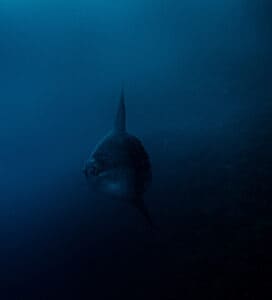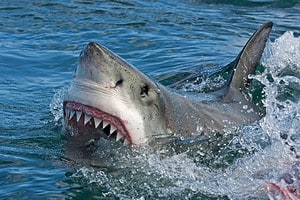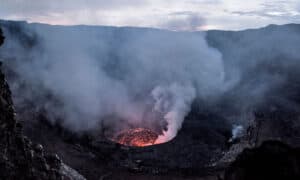Common carp (Cyprinus carpio) are freshwater fish that are native to central Asia and Europe. They have been distributed to different places around the world including North America. These fish can grow to very large sizes, but some common carp grow much larger than others. The common carp is a popular big catch with anglers, who usually catch them for sport. These fish have a bronze, silver, or golden-brown coloration with barbels located near their jaw. Although they don’t offer much in terms of appearance, the common carp’s large size makes them a desirable “big catch”. Read on to learn more about the largest common carp ever caught in Florida!
How Big Do Common Carp Grow?

Prolonged warm temperatures may encourage the common carp to reach a larger than average size.
©Rostislav Stefanek/Shutterstock.com
Like most species of carp, the common carp is able to grow quite large. The average adult size of common carp is between 1 to 2 feet in length, with an average weight of 4.5 to 30 pounds.
Certain environmental factors can influence how big carp grow. Prolonged warm temperatures may encourage the common carp to reach a larger than average size. A large body of water also allows common carp to grow abnormally large. It is not unheard of for common carp to weigh 40 pounds and reach a length of 2 feet.
Common carp aren’t even the biggest of the carp species. The Siamese giant carp can easily weigh up to 100 pounds! Carp in general are fast-growing and heavy-bodied fish. Australians view them as pests because they are a threat to native wildlife and vegetation.
Common carp inhabit slow-moving rivers, muddy waters, and drainage systems. They swim in groups through areas filled with vegetation.
The Largest Common Carp In Florida
| Type: | Common carp |
| Weight: | 40.56 pounds |
| Date: | 24th May 1981 |
| Angler: | Bernard Rowan |
| Location: | Gadsden County, Florida, United States |
For a common carp to qualify as a “big catch” in Florida, it must weigh at least 35 pounds.
In Florida, the common carp inhabits the western and northern Peninsula drainages, or the Choctawhatchee, Suwannee, Everglades, St. John’s, and the Apalachicola Rivers. Here their habitat includes banks, lakes, and drainage systems.
The largest common carp recorded in Florida was caught by Bernard Rowan in May of 1981, in the Apalachicola River in Gadsden County. This carp weighed 40.56 pounds, exceeding the qualifying weight by more than 5 pounds.
It is no surprise that this fish was found in the Apalachicola River, as the upper part is a great spot for fishing. The common carp is found in abundance in this Florida river.
Protocols
For Rowan to have his big catch recognized as a record fish in Florida, he had to follow the proper protocols.
This includes:
- Using the hook-and-line method to catch the fish.
- Having a license or exemption to catch the fish by sport fishing methods.
- Keeping the common carp on ice and removing the drain plug so as not to interfere with the carp’s weight.
- Identified by a certified biologist.
- Weighed on a scale, as an employee from the Florida Fish and Wildlife Conservation Commission (FWC) witnessed.
- Measuring and photographing the fish
Since this fish was caught in 1981, the weight and pictures were not captured properly. Therefore, it is not displayed and is considered an uncertified record. This means that strong evidence of the catch exists, but the angler did not meet all of the reporting requirements.
Aside from the angler’s name, location, date, and recorded weight, there is no further information about Rowan’s catch.
The Largest Common Carp In The World
The largest common carp in Florida doesn’t seem nearly as big when compared to the world record.
The largest common carp in the world weighed 75 pounds and 11 ounces. Leo van der Gugten caught it in 1987, in Lac de St. Cassien in France. This fish was nearly double the size of the one in Florida.
Final Thoughts
Common carp are able to grow to impressive lengths and weigh over 30 pounds. The largest common carp discovered in Florida weighed 40.56 pounds. Bernard Rowan found the big fish in the Apalachicola River in 1981.
Though the catch is uncertified due to reporting requirements, strong evidence exists that the fish was indeed caught.
Up Next:
- Discover the Largest Carp
- 10 Incredible Koi Fish Facts
- Biggest in the World? Fishermen Discover a Fish as Big as a Chevy Suburban
The photo featured at the top of this post is © Fabien Monteil/Shutterstock.com
Thank you for reading! Have some feedback for us? Contact the AZ Animals editorial team.






